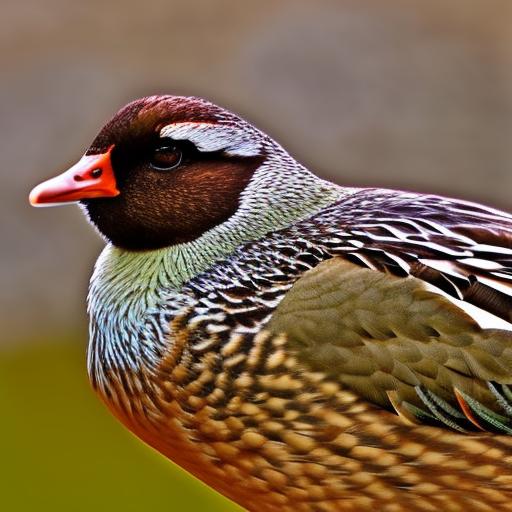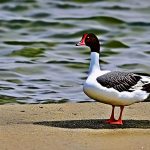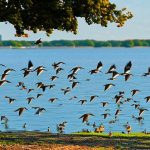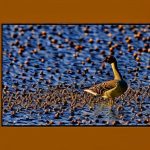Geese can be a common nuisance on properties, causing damage and leaving behind droppings that can be unsightly and unsanitary. Many property owners are constantly searching for effective methods to deter geese from their land. One method that has gained popularity is the use of moth balls. In this article, we will explore the use of moth balls as a deterrent for geese and discuss their effectiveness.
Key Takeaways
- Moth balls can be an effective deterrent for geese on your property.
- Geese can be a nuisance due to their droppings and aggressive behavior.
- Moth balls work by emitting a strong odor that geese find unpleasant.
- Different types of moth balls have varying levels of effectiveness in repelling geese.
- Proper placement of moth balls is important for maximum impact in deterring geese.
Understanding Geese Behavior
To effectively deter geese, it is important to understand their behavior. Geese are social animals that often gather in large flocks. They are attracted to open spaces, such as lawns and golf courses, where they can find ample food and water sources. Geese can be a nuisance because they leave behind droppings that can damage property and pose health risks. Additionally, their constant grazing can damage lawns and gardens.
How Moth Balls Work
Moth balls work by emitting a strong odor that is unpleasant to geese. The chemical compound in moth balls, naphthalene, is what geese find repulsive. When placed strategically around the property, the odor of the moth balls can deter geese from entering the area.
Types of Moth Balls
There are different types of moth balls available on the market. Traditional moth balls are made of naphthalene, while newer alternatives use paradichlorobenzene as the active ingredient. Both types can be effective in repelling geese, but paradichlorobenzene has a milder odor and is considered less toxic than naphthalene.
Proper Placement of Moth Balls
Proper placement of moth balls is crucial for maximum impact. It is recommended to place them in areas where geese are likely to congregate or roost, such as near bodies of water or on open lawns. The moth balls should be spread out evenly to create a barrier that geese will find difficult to cross.
Safety Considerations

While moth balls can be effective in deterring geese, it is important to consider safety precautions when using them. Moth balls are toxic and should be kept out of reach of children and pets. Additionally, the strong odor can be harmful to wildlife, so it is important to use them responsibly and avoid placing them near areas frequented by other animals.
Alternatives to Moth Balls
If you are not comfortable using moth balls or are looking for alternative methods to deter geese, there are several options available. One popular method is the use of visual deterrents, such as scarecrows or reflective tape, which can create a sense of danger for geese. Another option is the use of noise deterrents, such as ultrasonic devices or motion-activated sprinklers, which can startle geese and discourage them from staying in the area.
Maintaining Effectiveness
To maintain the effectiveness of moth balls over time, it is important to periodically replace them. The strong odor of moth balls will dissipate over time, making them less effective in deterring geese. It is recommended to replace the moth balls every few weeks or as needed to ensure their continued effectiveness.
Common Misconceptions
There are some common misconceptions about using moth balls to keep geese away. One misconception is that moth balls can harm or kill geese. While the odor may be unpleasant to geese, it is unlikely to cause any harm or fatalities. Another misconception is that moth balls can completely eliminate geese from an area. While they can be effective in deterring geese, it is important to combine their use with other methods for maximum effectiveness.
In conclusion, using moth balls as a deterrent for geese can be an effective method to keep them away from your property. By understanding geese behavior, properly placing the moth balls, and considering safety precautions, you can successfully deter geese and protect your property. However, it is important to remember that moth balls are not a foolproof solution and should be used in conjunction with other methods for the best results.
If you’re interested in learning more about keeping geese and finding effective ways to care for them, you might also want to check out this informative article on Poultry Wizard. It provides valuable insights on how to care for goslings, which is essential for their healthy development. Additionally, if you’re considering building a chicken coop or renting one, Poultry Wizard offers helpful articles on chicken coop door size and even renting a chicken coop. These resources will surely provide you with the knowledge and guidance you need to create a safe and comfortable environment for your geese and chickens.
Meet Walter, the feathered-friend fanatic of Florida! Nestled in the sunshine state, Walter struts through life with his feathered companions, clucking his way to happiness. With a coop that’s fancier than a five-star hotel, he’s the Don Juan of the chicken world. When he’s not teaching his hens to do the cha-cha, you’ll find him in a heated debate with his prized rooster, Sir Clucks-a-Lot. Walter’s poultry passion is no yolk; he’s the sunny-side-up guy you never knew you needed in your flock of friends!







